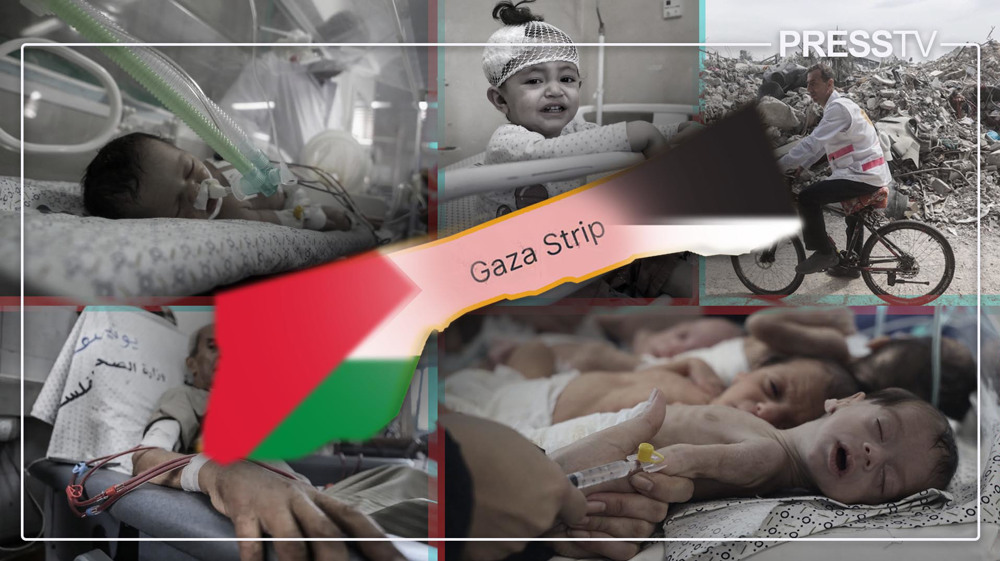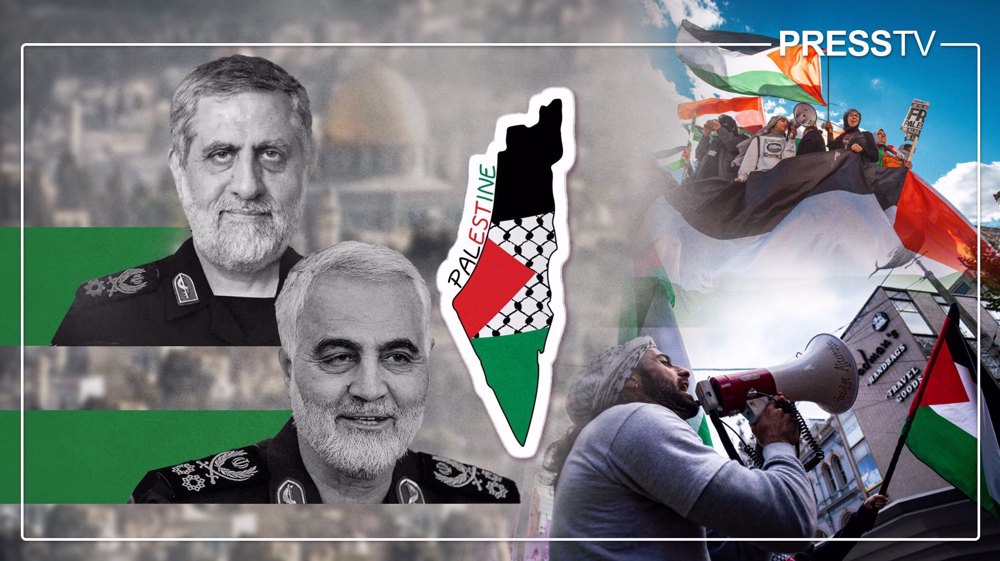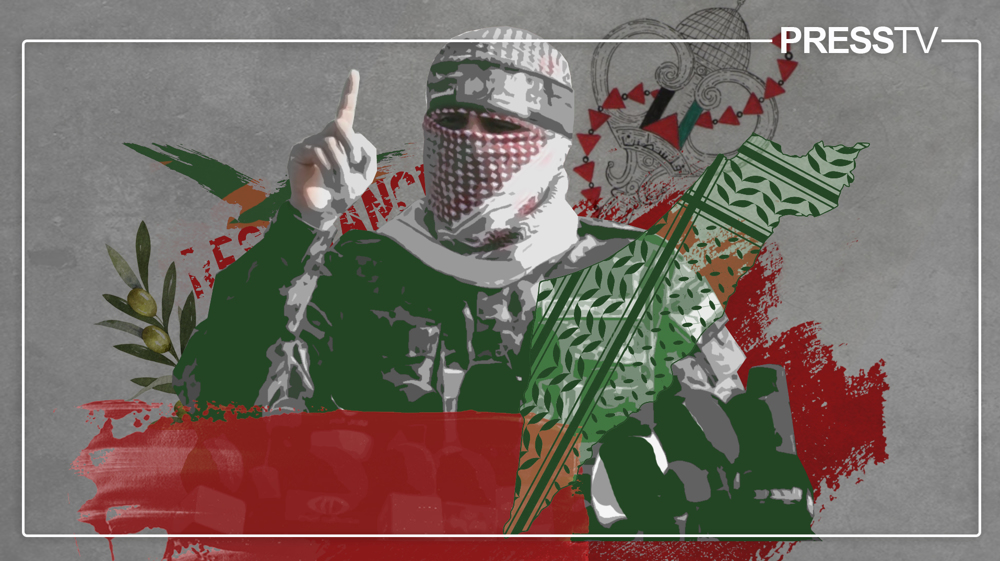On the edge: Bombings, siege push Gaza into health crisis, spawn diseases
By Maryam Qarehgozlou
“It is raining, hundreds of thousands of people are in tents, they don’t have any place to go, they are in the streets, I am one of them, it’s cold, it’s windy,” Bisan Owda, a Palestinian filmmaker who has been documenting everyday life in Gaza since October 7, said in a short Instagram reel on Sunday.
The 2.3 million people in Gaza, most of them children, who have been suffering under Israel’s indiscriminate bombings for over six weeks, now face challenges related to the health crisis as well.
The crippling siege has disrupted not only ordinary life but also blocked the entry of supplies.
Aid agencies have for weeks been warning that lack of access to clean water and food is pushing the blockaded coastal territory to the verge of a major disease outbreak.
According to the World Health Organization (WHO), only one-quarter of Gaza’s hospitals are currently operational as most of them have been forced to shut down due to non-stop Israeli bombardment.
“26 out of 36 hospitals are now closed, either due to damage, attacks or because they have run out of fuel. Patients, health workers and ambulances are not able to enter or exit some hospitals,” the world body said in a press conference last week.
In the last week, more hospitals have been put out of service and doctors have been killed, injured or arrested by the Tel Aviv regime, which enjoys full patronage of the West.
The four-day ceasefire announced on Wednesday, according to experts, will do little to alleviate the suffering of Gazans as the damage caused by 48 days of aggression cannot be undone or reversed.
Oxfam, an international aid group, in a statement on Wednesday said the truce deal is “a band-aid” to the bleeding wound of Gaza, echoing what rights activists and aid workers in Gaza have also said.
Water, food crises, diseases
The all-encompassing siege that the Israeli regime has imposed on the Gaza Strip since the start of the latest war has led to an acute shortage of fuel, which is required to pump and clean water.
The United Nations Relief and Works Agency (UNRWA) estimates that nearly 70 percent of Gaza’s 2.3 million people – more than half of whom are children – no longer have access to clean, drinkable water.
With the near-total collapse of water systems in the territory, people there have been forced to drink contaminated and salty water, which has exacerbated concerns over the outbreak of diseases.
“Lack of fuel has led to the shutting down of desalination plants, significantly increasing the risk of bacterial infections like diarrhea spreading as people consume contaminated water,” the WHO Regional Office for the Eastern Mediterranean (EMRO) said in a statement on November 8.
Reports from various aid agencies reveal that gastrointestinal diseases like cholera and respiratory and skin infections are rising in Gaza, with more than 800,000 people crammed into overcrowded schools and other “collective centers.”
WHO has already warned of “worrying trends” emerging due to the rapid spread of diseases.
Richard Peeperkorn, WHO Representative in the Occupied Palestinian Territory, said in a video on Friday that weeks of Israeli bombardments which have forced people to crowd into shelters with scarce food and water has “extremely concerned” the world health body.
He said more than 70,000 cases of acute respiratory infections and over 44,000 cases of diarrhea, nearly half of them children under five, have been recorded in Gaza since Oct.7, creating an alarm.
During the year 2021-2022, the average number of diarrhea cases in children under five in the Gaza Strip was around 2,000 a month, according to the WHO.
There have been more than 800 cases of chickenpox, and over 14,000 skin rashes, 11,000 cases of scabies and lice, Peeperkorn said, citing data from Gaza’s Ministry of Health, UNRWA and WHO.
“We are extremely concerned about the spread of disease when the winter season arrives,” he added.
Osama Saqr, a 33-year-old Gazan who is now staying at a school run by the UNRWA in southern Gaza’s Khan Younis city, was quoted as saying that his one-year-old son has diarrhea, but he cannot find medicine in hospitals or pharmacies to treat him.
“Even if I find it, the problem remains, the water is polluted and salty, not suitable for drinking,” he said.
Pedro Arrojo-Agudo, the UN Special Rapporteur on the human rights to safe drinking water and sanitation, also said on Friday that Israel “must stop using water as a weapon of war.”
People in Gaza are also grappling with the shortage of food as food supply chains have broken down.
“As people face food shortages, malnutrition, and impending colder weather, they will be even more susceptible to contracting diseases. This is especially concerning for the more than 50,000 pregnant women and approximately 337,000 children under the age of five currently in Gaza,” WHO warned.
UN says no bakery in the northern Gaza Strip has been active since November 7 due to lack of fuel, water, and wheat flour and because of structural damage caused by Israel’s deliberate bombing of bakeries.
The advocacy group Euro-Mediterranean Human Rights Monitor has slammed the Israeli regime for waging “a war of starvation” against civilians in the Gaza Strip.
‘No fuel, no aid’
On Wednesday, UNRWA said it received just over 23,000 liters of fuel, but Israeli regime authorities have restricted its use only to transport the little aid trickling into Gaza via Egypt’s Rafah crossing.
The relief agency added it needs 160,000 liters of fuel every day for basic humanitarian operations.
“It is appalling that fuel continues to be used as a weapon of war. For the past five weeks, UNRWA has been pleading to get fuel in support of the humanitarian operation in Gaza,” the agency’s Commissioner General Philippe Lazzarini told a press conference at the time.
“This seriously paralyzes our work and the delivery of assistance to the Palestinian communities in Gaza.”
Tedros Adhanom Ghebreyesus, WHO Director-General, speaking at an informal plenary meeting of the United Nations General Assembly on the situation in Gaza on Friday, said the amount of aid entering the besieged territory is “pitiful” and cannot be distributed without any fuel.
“Frankly, the amount of aid that has been allowed into Gaza so far is pitiful. It’s pathetic. And even the little aid we can get into Gaza cannot be distributed without fuel. It’s as simple as that: no fuel, no aid,” the WHO chief stressed.
Sewage crisis in Gaza
The blockade on electricity and fuel has led to the forced shutdown of all five of Gaza’s wastewater treatment plants and most of its 65 sewage pumping stations, the UN Office for the Coordination of Humanitarian Affairs (OCHA) said in a report last week.
“Lack of fuel has also disrupted all solid waste collection, creating an environment conducive to the rapid and widespread proliferation of insects, and rodents that can carry and transmit diseases,” said the statement by WHO EMRO.
According to Oxfam, untreated sewage is now being discharged into the sea and, in some areas, solid waste is accumulating in the streets.
“Cases of acute watery diarrhea [are reported] as the sewage system breaks down and people are forced to defecate in the open,” the WHO chief said on Friday.
“We are hearing about several hundred people per toilet at the UNRWA centers and those have been overflowing, so people are doing open defecation,” Richard Brennan, regional emergency director for the Eastern Mediterranean region at WHO, was quoted as saying by Al-Jazeera.
“They have to find a place to go to the bathroom on the grounds where they are staying. That’s a huge public health risk and also very humiliating,” he hastened to add.
WHO has said it is extremely concerned that rain, which could bring the risk of floods during the approaching winter season, could exacerbate the problems facing the 2.3 million people.
‘A recipe for disaster’
In his address to the UN General Assembly meeting on Gaza on Friday, the WHO chief also rejected Israel’s so-called “safe zone” proposal for not being feasible and further exacerbating the crisis.
After ordering mass displacement of Gazans from the north to the south, Israel is now considering moving a 2.3 population to a small area at Al-Mawasi.
“The proposal for a so-called “safe zone” at Al-Mawasi is a recipe for disaster,” Tedros said.
He said WHO will not take part in the establishment of any so-called “safe zone” in Gaza without broad agreement, and unless fundamental conditions are in place to ensure safety and other essential needs are met, and a mechanism is in place to supervise its implementation.
“Attempting to cram so many people into such a small area with such little infrastructure or services will significantly increase risks to health for people who are already on the brink,” He warned.
The four-day truce deal, confirmed by both Hamas and the Israeli regime, isn’t enough to stabilize the situation in Gaza as the simmering humanitarian crisis requires more than four days to subside.
Also, experts believe, the Israeli regime’s notorious record of not adhering to rules, resolutions and deals makes it unlikely that the crisis in Gaza, especially the health crisis, will be resolved anytime soon.
On Thursday, there were reports of the Israeli military pounding many parts of the Gaza Strip, with a death toll of Palestinians surging ahead, despite the ceasefire agreement.
VIDEO | Protesters in Paris slam Israel’s revocation of NGO licenses in Palestine
Israeli minister lays claim to Gaza, West Bank, calls Palestinians 'temporary guests'
Hamas: US strike on Venezuela, abduction of Maduro ‘grave violation of intl. law’
VIDEO | Lebanon commemorates martyrdom anniversary of General Soleimani
VIDEO | Massive protest held in Cuba to condemn US military operation in Venezuela
US Democrats float retaliation over Trump’s ‘insane’ Venezuela aggression
Iranian badminton star set to make history: Why Soraya Aghaei’s IOC nomination matters
VIDEO | Tunisians commemorate martyred resistance leaders










 This makes it easy to access the Press TV website
This makes it easy to access the Press TV website